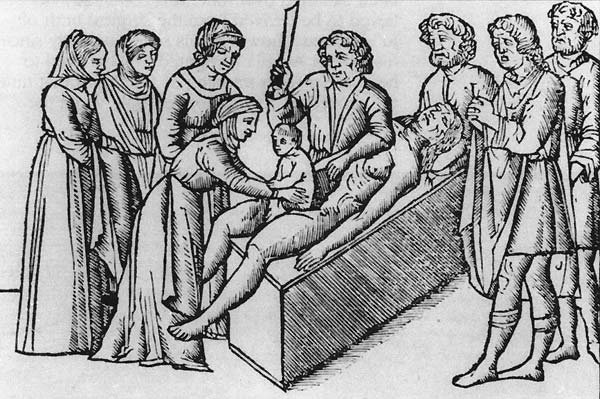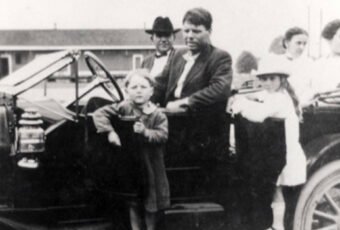Chainsaw’s origins are related to Scottish medicine, and it’s not what you’re expecting. Chainsaws were used to assist in childbirth—yes, you read that right. Chainsaws were used to assist in a childbirth procedure called symphysiotomy, and that’s why they were invented, unlike how we use them today.
The need for Chainsaw in childbirth
Before the common use of the c-section, all babies had to be passed through the birth canal. When the babies were normal size, the procedure went smoothly, and everything was fine. But as we know, babies can become obstructed in there if they are breech or too large. When babies couldn’t fit through or got stuck in the pelvis, parts of the bone and cartridge were removed to make more room. This process was called “symphysiotomy”

Cesarean(c-section) delivery is used to deliver a baby through surgical incisions made in the abdomen and uterus. Planning for a c-section might be necessary if there are certain pregnancy complications. Women who have had a c-section might have another c-section. Often, however, the need for a first-time c-section isn’t clear until after labor starts.
Hospitals were not equipped in the 18th century as they are now to make childbirth as easy as possible, especially childbirth – there were mainly two reasons why
i) Syphysiotomy – it was a surgical procedure, which was only used when the baby got stuck. When babies are too large to path the pelvis area, or they could be located in the womb with their feet first, in such cases the doctors had to remove the cartilage and the bone from the pelvis to make it wider, so the baby could actually get out.
ii) Lack of c-section practice – believe it or not but the first officially documented fact of C-section happened in the United States only 14 years after the chainsaw invention – Elizabeth Bennett, in 1794, proved that the birth canal is not the only way to give a new life and survive at the same time.
The usage of a small knife and a long procedure resulted in intensive blood loss and caused several deaths, and also all this happened without anesthesia. The need for chainsaws was pretty obvious, it helped doctors to save the lives of many mothers and children. The first chainsaw invention proved that the procedure was not painless by any means, but it was much faster than the regular knife and saw tools and caused less risk of infection.
In order to make the removal of pelvic bones simpler, two Scottish doctors created a prototype for a chainsaw in the 18th century.

The procedure was originally performed by hand using a small knife and saw to remove the bone, and worse than that, all of this was done without giving anesthesia to a woman in the middle of giving birth. It took a long time and was indeed messy and painful.
In 1780, two Scottish doctors, John Aitken and James Jeffrey invented the chainsaw as an easier and less time-consuming alternative for removing bones.
John Aitken was the senior president of the medical society of Edinburgh. As for James Jeffrey, he worked in anatomy and botany which he taught at Glasgow University. Both of the inventors were well known and respected for their accomplishments in medicine, including the invention of their surgery chainsaw. The device they made saved a lot of lives.
Unlike the chainsaw we use now, the first model was powered by a hand crank and looked like a modern-day kitchen knife with little teeth on a chain that would form an oval. It was small enough to fit in a doctor’s hand; the original chainsaw was more like a small serrated knife attached to a hand crank. However, it proved to be useful, but many doctors were still afraid to use it due to its tricky use and dangerous nature.
The chainsaw we used today in the timber industry was the invention by German orthopaedist, Bernhard Heine, a boy from a medical family who invented a tool called an osteotome or bone saw. The osteotome had links of a chain carrying small cutting teeth with the edges set an eagle; the chain was moved around a guiding blade by turning the handle of a sprocket wheel.
Heine’s invention took off and was adapted to multiple surgical procedures. The final product kept improving with time and played a significant role in 19th-century amputation. It now serves as a direct ancestor to the modern-day chainsaw.
Chainsaw was used for about a century, but in the 20th century, chainsaw was no longer used by medical. But still, a lot of third-world countries are still using this painful practice nowadays, due to a lack of tech access, specialists, and tools.
Now that you’ve read about the discovery of the Chainsaw, you might also like reading about The Accidental discovery of Penicillin.










